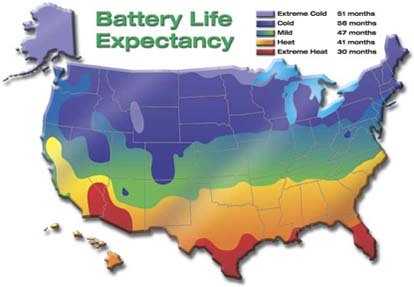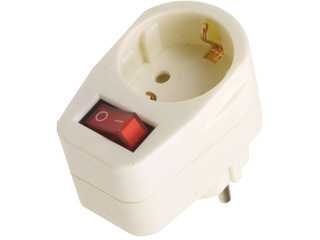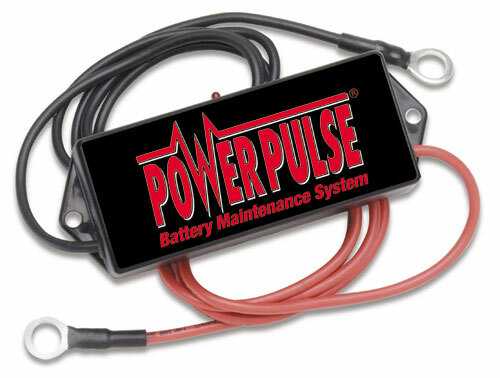7
4
I have read that most (maybe all?) UPS devices for personal computing have lead-acid batteries inside.
As long as its chemistry, compared to lithium-ion, is very different, I would like to know what general end-user maintenance cares should I remember in order to make my UPS keep working as its best for the longer possible time.
Please include the possibility of changing batteries. I am and end-user, but capable of using a screwdriver and changing things inside my computer, so I can do it too inside my UPS. Oh, yes, maybe it is not worth the effort for some models (if a new UPS is not expensive), but I am not sure what kind of batteries should I buy and all that stuff.




Much of what you've written about "Avoid small discharges", "avoid small charges", discharging to 50%, etc., is lore concerning NiCd batteries. It has very little to do with lead-acid types in UPS service. – Jamie Hanrahan – 2016-05-19T15:26:15.093
@JamieHanrahan, I don't think small discharges are harmless. I remember I read about it on the papers at the Further readings section. I don't know exactly where, but I remember having read some thing like "Car batteries are not so needed of deep discharges, as long as the great power needed to start a vehicle motor is already a deep discharge". Maybe someone over here could confirm with more exact links. – Sopalajo de Arrierez – 2016-05-19T21:33:33.717
The energy needed to start a car is not at all a deep discharge for a car battery in good condition. A typical starter motor for a small car might pull 100 A for 3 s.: less than a tenth of an A-h. The same car's battery would likely have a capacity of around 45 A-h. So the start takes about 1/500 of the capacity, hardly "deep". btw: some UPSs run a periodic quick self-test, running the load on the battery for about 10 seconds every week. (You can configure it but this is the default.) If this was damaging to the battery, don't you think they'd do something else? – Jamie Hanrahan – 2016-05-19T22:07:31.977
Well, @JamieHanrahan , the usual warranty period for a UPS battery is just 6 months. If the small discharge of the self-test shorten its lifetime, I think it is a great business for sellers. In fact, I don't use to find UPS devices with batteries at good health state after 2 years, or even less time. – Sopalajo de Arrierez – 2016-05-20T00:53:09.027
@JamieHanrahan, concerning the 1/500 capacity draining to start a motor, I can not rebate your numbers, but I dont think my bike could try to start (i.e: when the motor is to cold) 500 times, or even 50. – Sopalajo de Arrierez – 2016-05-20T00:54:55.290
The batteries in my UPSs, despite all those little self-tests, are usually good for three years at least (known because they do a full discharge self-test every month or every other month, depending on model). Don't see how a battery-damaging self-test protocol would help the UPS makers as most people don't buy their replacement batteries from the UPS maker; aftermarket ones are far cheaper. – Jamie Hanrahan – 2016-05-20T01:36:41.743
It is true that you won't get 500 starts-without-recharge out of a car or bike battery, but remember that a battery's A-h capacity is normally quoted at the 10-hour discharge rate, not the 30-minute rate! You should, however, get at least 10, which I think pretty well refutes the "one start is a deep discharge" claim. – Jamie Hanrahan – 2016-05-20T01:38:34.650
I would say, @JamieHanrahan, that maybe the batteries in your UPSs are usually good for three years at least precisely because they do a full discharge self-test every month or every other month. This is supposed to clean dioxides and dendrithes. Anyway, full discharges are not supposed to be good for lead-acid batteries (see the graph from AINO Micro Manufacturer above). – Sopalajo de Arrierez – 2016-05-20T20:49:28.180
Another possibility for motor batteries: 1.- You start your car (-10% battery). 2.- You drive to the nearby (it uses to happen on cities) so the fuel motor recharges your battery +3% and stop the motor. 3.- You start again the motor (-10% again, so battery goes to 83%). 4.- You go to some near place again... etc. In this case, you could left your battery at some 60% remaining charge, that is more close to deep discharge. – Sopalajo de Arrierez – 2016-05-20T20:52:42.853
It would be fine to have some measurement device integrated on lead-acid batteries, but the last time I asked for (about year 2009) the price of this tool was about 8.000$ (LOL :-O ) . So, most of our debates must be just especulations. – Sopalajo de Arrierez – 2016-05-20T20:54:16.413
Back when I had cars with actual ammeters (added by me) I noticed that charging after a normal start was usually complete within a few minutes of normal city driving. And I've run local errands "all day long" with no trouble starting the car at the end. So I don't think the "gradual approach to deep discharge" scenario is plausible, not if your charging system is working right. – Jamie Hanrahan – 2016-05-20T22:43:35.117
My goal with UPSs is not to coddle the batteries for maximum calendar time before replacement, but rather to USE them to supply power during outages. Confidence that they'll do the job does require testing the "run to failure" time periodically. If that means I have to replace the batts a little more often, well, so be it. Better that than wait until I need them to learn that they've gone bad. – Jamie Hanrahan – 2016-05-20T22:55:24.150
Aino's chart doesn't show much impairment (below 80%) until after 200 deep cycles. At one test per month, which is far more than the number I go through from actual power failures, that's 16+ years; I think I can stand it. But whether or not the deep-cycle test helps or hurts the battery, batteries do sometimes fail prematurely, so periodic tests are required if the batteries are to be relied upon. – Jamie Hanrahan – 2016-05-20T23:07:21.793
What about calibrating a newly replaced battery? Should I be concerned about that? – RogUE – 2016-09-30T08:56:09.257
@RogUE , I think calibration, at leats for lead-acid batteries, is a method to make the circuitry of the UPS know about the battery it has inside (via full charge and discharge), so it should be UPS device specific. – Sopalajo de Arrierez – 2016-10-01T10:03:05.690
It would probably be a bad idea to use a desulfator on a gell type cell in the common consumer UPS, work ok for big wet batteries, the art of desulfating can (does not have to) create gas, gas in the gell never leaves, just ruins them. A (slightly) higher amperage battery should not present a problem, an overrated one, could just be as bad as its fake rating. These gell cells are not good for long times or numbers of cycles at all, you wont get 100 50% out of them and not 25 deep. They should be replaced A) anytime it doesnt work well enough B) after about 4-5years. – Psycogeek – 2014-04-21T06:29:53.697
1I wouldn't bother to drain a gell cell, in a wet cell things can "move" a bit, again in these gelled electrolyte cells you cant "slam stuff back onto the plates with power" (my words). They will last as long on the proper maintainance charge as they will by cycling them any ammount. I have used about 70 of the little gems and the ones stuck in the UPS on its maintance charge lasted the longest in time, but indeed are becomming weak and a 50% discharge is not going to hurt, but I wouldnt be doing it as a regular thing. – Psycogeek – 2014-04-21T06:41:39.073
@Psycogeek, your argument about gas generation due to desulfation makes sense for me. I have the feeling that desulfation isn't doing much good to the UPS batteries in all my tests until now. But just a precision: resellers report that UPS batteries model use to be chrystalized gel, instead of just gel. I don't know how much does this affect. – Sopalajo de Arrierez – 2014-04-21T10:04:22.573
Yea the different types gets a little complicated. There is AGM (Absorbed Glass Mat) and "starved electrolyte" also of that same smaller size of lead acid and probably others. The AGM being completly different , but not likely to be used in the cheaper consumer stuff. All the ones in the 4 UPSes here are the same kind of gell cell you get at the hobby shop, and electronics store. They are Always way easier to replace than it might look from the outside. luckey it isnt an array of lower voltage cells. – Psycogeek – 2014-04-21T10:32:45.233
There is also compatably made li-fe-po batteries, I wish I could afford. the li-fe would love to be deep discharged, would last a full 10 years , uses very robust li-ion types of cells, and would not Dip in voltage so much under these loads, which could improve runtime by lots in high power need. Draining these gell cells in 15-20 minutes is harsh on them, the li-fe-po cells they are making psudo 12V batteries with would handle that better too. – Psycogeek – 2014-04-21T10:36:36.717
Respecting to discharges (to 50% suggested, 20% maximum), I am not proposing it as a "regular thing", but rather once each a few months, in order to clean dendrites, @Psycogeek. – Sopalajo de Arrierez – 2014-04-21T14:00:07.000